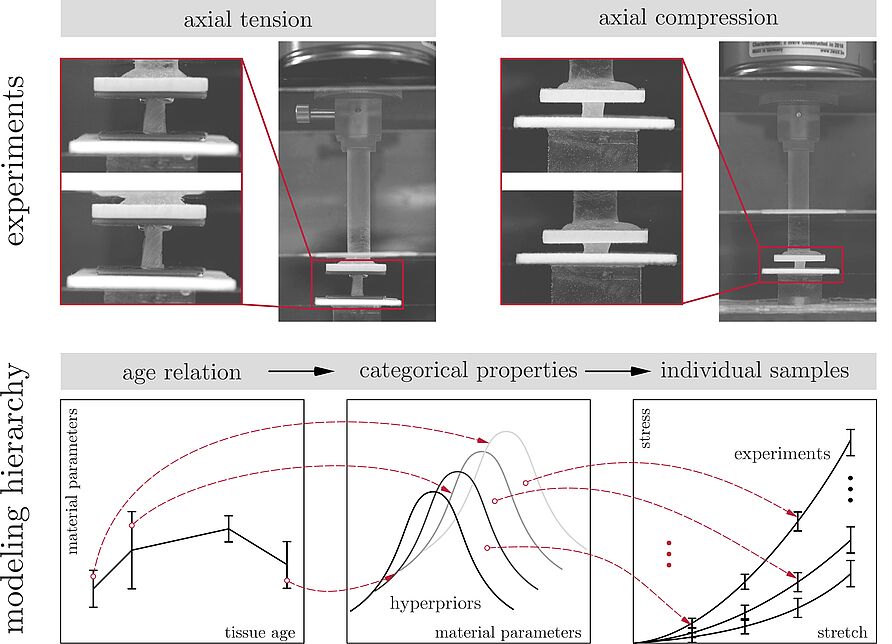Our brain undergoes significant micro- and macroscopic changes throughout its life cycle. It is therefore crucial to understand the effect of aging on the mechanical properties of the brain in order to develop accurate personalized simulations and diagnostic tools. Here we systematically probed the mechanical behavior of n = 439 brain tissue samples in tension and compression, in different anatomical regions, for different axon orientations, across five age groups. We used Bayesian statistics to characterize the relation between brain age and mechanical properties and quantify uncertainties. Our results, based on our experimental data and material parameters for the isotropic Ogden and the anisotropic Gasser-Ogden-Holzapfel models, reveal a non-linear relationship between age and mechanics across the life cycle of the porcine brain. Both tensile and compressive shear moduli reached peak values ranging from 0.4-1.0~kPa in tension to 0.16-0.32 kPa in compression at three years of age. Anisotropy was most pronounced at six months, and then decreased. These results represent an important step in understanding age-dependent changes in the mechanical properties of brain tissue and provide the scientific basis for more accurate and realistic computational brain simulations.
M. Hoppstädter, K. Linka, E. Kuhl, M. Schmicke, M Böl
Machine learning reveals relations between brain age and mechanics
online first, Acta Biomterialia (2024) [Link]

